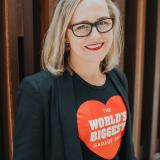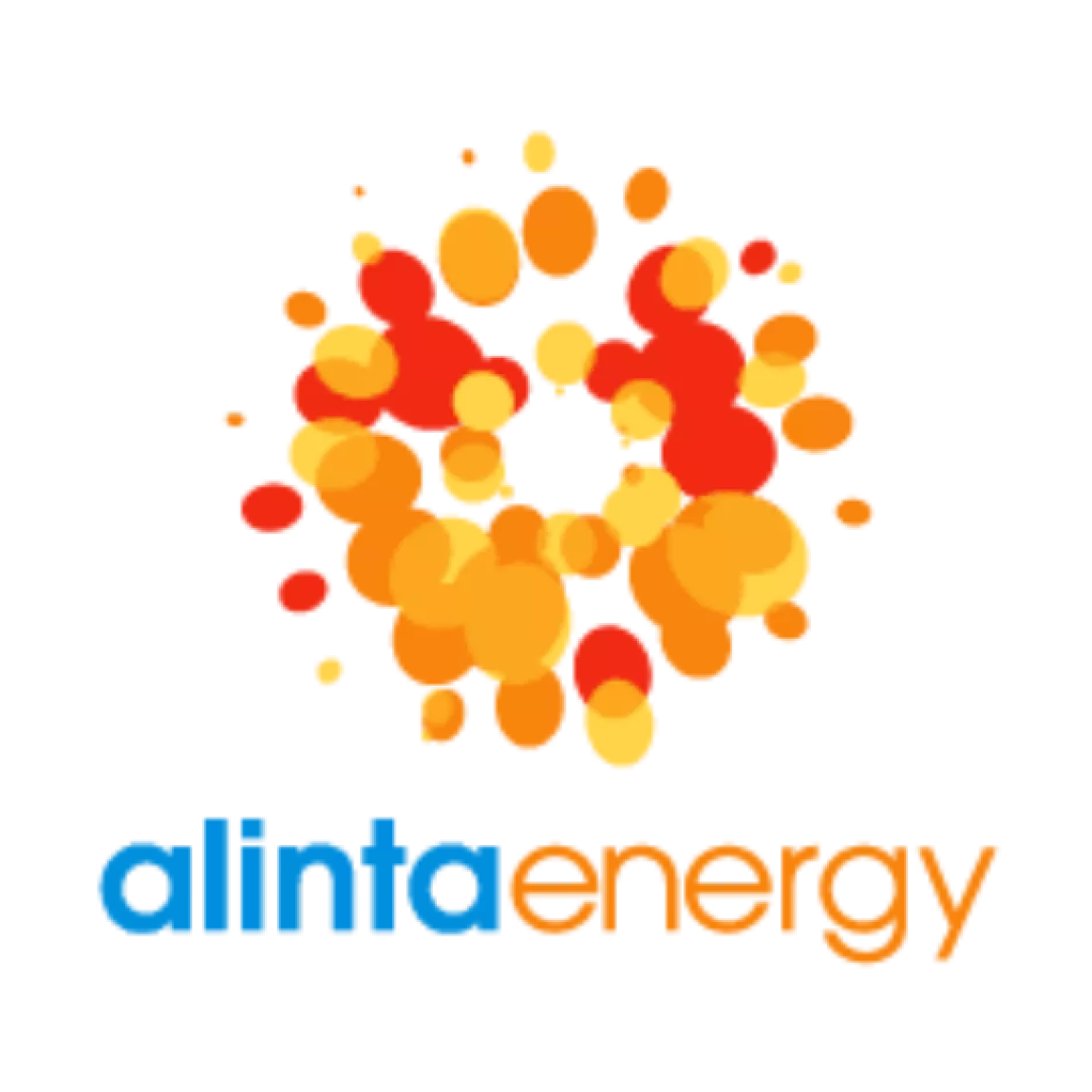10-21 years old? Passionate about the environment? Thanks to Alinta Energy this is your chance to develop solutions to create a better future. Open September 4th to December 4th.
This challenge has finished
As a growing global community we now consume or use more resources than our planet produces in a year, and our consumption continues to grow.
Experts estimate that 2-3 billion additional middle-class consumers will be added by 2050. This growth in demand and consumption of our planet’s natural resources is unsustainable in the long term. Solving this problem is not just important, it is vital to the future of our planet.
Our challenge for you is: How might we encourage people to produce and consume resources more responsibly?
This challenge is based on the 12th Sustainable Development Goal from the United Nations. The Sustainable Development Goals are an urgent call for action by all countries - developed and developing - in a global partnership. They were set in 2015 by the United National General Assembly. This challenge is supported by Alinta Energy who are committed to delivering delivering lower emissions energy that’s also reliable and affordable.
Within this challenge there are many important issues which we can reframe as opportunities to make a change. Did you know:
- 1.3B tonnes of food is wasted each year. How might we reduce food waste and/or overconsumption?
- Food production accounts for 22% of total greenhouse gas emissions, largely from the conversion of forests into farmland. How might we decrease greenhouse gas emissions from food production?
- Only 3% of the world’s water is fresh (drinkable), and humans are using it faster than nature can replenish it. How might we better use our water resources?
- 1/5th of the world’s final energy consumption in 2013 was from renewable sources. How might we get to 100% renewable energy?
For this challenge we ask you to focus on one of these “how might we?” opportunities to increase responsible production and consumption and choose one area you want to try and effect this change - your home, school or your local community! At Young Change Agents we see problems as opportunities to innovate! We want you to help us tackle this challenge. In the past we’ve seen students develop self-watering gardens to respond to droughts, recyclable clothing to prevent fast fashion and biodegradable paper to prevent deforestation. What environmental issues have you noticed? What innovative solution can you think of for these issues?
Award Categories and Prizes
Submit your idea by the 4th of December to be eligible for some great prizes! There are two categories of awards:
1. 10-15 years old's (3 winners will be chosen)
2. 16-21 year old's (3 winners will be chosen)
The winners will receive the following per idea:
- An awesome JBL Flip Essential Portable Bluetooth Speaker (or a voucher if there are multiple people in your team)
- A virtual mentoring package from Young Change Agents (2 x 1 hr sessions)
- Plus the opportunity to be featured on our website and in our top ideas media campaign!
- 14 runners-up will also receive a special reward for taking part and be featured on our site as a runner-up!
What is the challenge?
The Environmental impact challenge is a free online design thinking challenge that empowers you to consider environmental challenges you have noticed, explore these challenges, develop a solution and create a prototype. The focus is on “How might we encourage people to produce and consume resources more responsibly?”.
How do I participate?
This is a challenge you can do on your own or with a friend, team or family member. It can also be run by your teachers or parents.
Will I get feedback?
If you submit your solution by the 30th of October you will get feedback to help you develop your idea!
Why is this important now?
As the global population grows our world's finite resources are increasingly being stretched to their limits. As future leaders of the world it is important that you are fighting for a sustainable world for people to enjoy for generations to come.
Who are we?
Young Change Agents is a not-for-profit social enterprise that empowers young people across Australia to find problems in their community, reframe them as opportunities, and then come up with solutions. By running online events like this we want to support young people like yourselves to be Young Change Agents!
How is the challenge be structured?
1. Choose one of the four challenge areas and think about where you want to create change
You need to choose one of the following themes to focus on:
- Reduce food waste and/or overconsumption
- Decrease greenhouse gas emissions from food production
- Encourage better use of our water resources
- Improve energy efficiency and use of renewable energy
You can then choose to focus on this theme in your home, your school, or your community.
2. Explore your problem
You then need to deep dive into the challenge area you’ve chosen. This will help you find out why the problem is happening in that context. To do this you need to ask the question, “why” and then ask “why?” again until you get to what we call the “root cause” or the bottom of the problem. For example: You have chosen the challenge “Reduce food waste” and picked “at schools” as your area you want to effect change. Your conversation might go something like this:
- Why is there food wastage at school? Because kids don’t always like what’s in their lunchbox
- Why? Because they don’t make their own lunch.
- Why? Because their parents do it for them!
Aha! So what if we made it easier for students to create their own lunches?
Of course, there are many reasons why there is food waste at school - you can pick lots of reasons and follow the same process to come up with a different root cause. In reality, solving problems needs to be done in multiple ways, and all together! That's why the Global SDGs are a call to action for everyone to work on these together in lots of different ways!
3. Learn more about your problem
You can also discover more about a problem by conducting interviews. We call these “empathy interviews” because you are listening to someone talk about the problem and developing an understanding as to why this is a problem for them. So, find a partner and ask them to tell you about this problem and how it affects them. For example: You have chosen the challenge area of “moving towards 100% renewable energy” and have chosen “in the home” as the area you want to effect change.
You might ask your friend questions like:
- What sort of energy sources do you use in your home?
- What percentage of your energy use in your home is currently from renewable energy?
- What uses the most energy in your home and how energy efficient are they?
- What do you think about renewable energy?
- How could you use less energy in your home?
- Have you done anything in the last 3 years to reduce energy consumption or to move to renewable energy?
To create a solution that will have a positive impact you need to think about who is being affected by the problem. Whilst we are all impacted by environmental issues in the long run it’s important to be specific. Is it animals, workers, farmers? Try and figure out who you want to help!
4. Reframe your problem and come up with some ideas
From your empathy interviews you will get interesting insights about some problems this person might have in helping to be part of the solution. For example, Sarah might use her clothes dryer everyday as her backyard is small and she doesn’t have space for a clothesline. You can then turn that into a, “how might we” question. For example, "how might we create a better clothes drying solution for small backyards?” or, “how might we better predict when clothes are dry in a dryer so we don’t overuse it?” We do this because we like to think about opportunities rather than problems. This helps you to be creative and innovate, rather than focus on a negative situation.
Now you have your opportunity, it is time to be creative and come up with ideas! Get a notebook, post-its or some coloured paper and come up with as many ideas as you can. Imagine you have one million dollars and you can do anything you want. Imagine you had to use tech to do it. Then imagine you had no access to tech..what would you do? Push yourself to come up with at least ten different ideas. Then take a break and try and come up with even more! Think about your audience you and how you could best help them. Once you’ve got a lot of ideas choose the one you think would best solve your opportunity. This is your solution. Remember there’s no such thing as a bad idea.
5. Test the solution you have designed
Before you share your ideas or spend time building something, it’s a good idea to test and improve your ideas. This process is called validation. This could be done by talking to your parents about what you have created and asking for some feedback. You could even consult the target group you are trying to help (this may not work if you are helping animals) but as you get more feedback on your idea you can make it even better. Don’t forget to try and avoid close contact with people and use the internet and the phone where possible. Another great way to test is to create a prototype - this is a draft version of your idea. You can do this by drawing what your idea would look like, creating a mini-version, building something out of recycled materials, or creating a plan of what idea could look like.
6. Share!
Now that you’ve got an idea, we want to hear it! Click ‘sign up now to get started’ at the top of this page. Keep in mind we’ll ask you for a logo and a picture of your solution. This could be of your brainstorming, a picture of what your idea would look like, a poster promoting your idea or something else that is a visual representation of your idea.
Challenge Tips
For Educators
Would you like us to run this as a challenge for your students? Get in touch to book a workshop! Or we can provide you with our classroom kit so you can run this as a 1-2 hour design-thinking challenge for your class.
For Parents (of Under 18 Entrants)
This is a great activity to do with your child to re-frame current challenges as an opportunity to problem-solve. You or your child will need to create an account to post their project idea! Point your child to this page to work through independently using the instructions to the left and video tips OR you can run this as a 90 min challenge at home using our worksheet and guide! T&C's on the sign-up form!
Special Guest Judges

Stephanie Bowen
Corporate Social Responsibility Manager, Alinta Energy

Warren Reichenberg
Senior Engagement Manager, Infosys

Yasmin Grigaliunas
CEO & Co-Founder, The World's Biggest Garage Sale

Aaryan Shah
Youth Representative & Winner of YCA Coronavirus Design Challenge

Katura Halleday
Youth Representative and Social Entrepreneur

